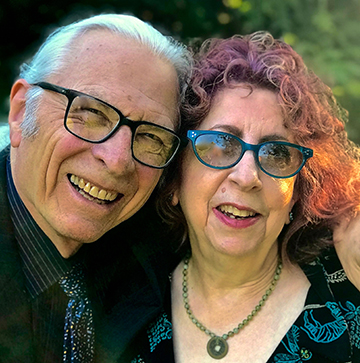It’s Only (Reading About) Rock ‘n’ Roll, But We Like It

If you’ve ever picked up a musical instrument or tried to write a song, or even if you just enjoy music in general, you’ll be captivated by two recent autobiographies: “Chronicles” by Bob Dylan; and “Life” by Keith Richards. The combined musical output of these two men has illuminated the lives of a generation of fans. Now these biographical confessions illuminate the corners – some very dark indeed – of their own lives.
But beware; the trips from then ‘til now aren’t always light reading. Both books will tell you everything you want to know about how to write a song and what life is like “on the road.” But you may learn more than you anticipated. It’s impossible to talk about Richards’ life without using the words “heroin,” “syringe” and “cold turkey.” Dylan, on the other hand, got into motorcycles; the crashes and crushed bones may be as uncomfortable for the reader as they were for him. And yet these books will engross you—and there’s a magical symmetry to reading them together, as illustrated by the juxtaposition of certain events, which weave themselves into one fascinating era of music.
Once upon a time a kid named Robert Zimmerman dropped out of a mediocre rock ‘n’ roll band in Hibbing, Minnesota and drove to Fargo, North Dakota to play piano for a kid named Robert Velline. At the time, Velline was a rockabilly singer in need of a piano player. Zimmerman didn’t stay in Fargo for long. After all, he didn’t really know how to play piano. And he had a vague dream of going to New York City.
Velline’s dream was more concrete. Months after he’d met Zimmerman, he traveled to Los Angeles, switched from rockabilly to pop, signed with a manager, and changed his name to Bobby Vee.
Settling in Greenwich Village, Zimmerman hung out in clubs listening to folk singers, read everything from Lord Byron to William Faulkner, and finally decided that he wanted to be a storyteller. And he changed his name to Bob Dylan. Around the same time, in a London suburb, a kid named Keith Richards daily walked to school hoping to bump into a cool kid he’d heard about from the next neighborhood: Mick Jagger. Even before the pair finally got together, each dreamed of only one thing: American blues. Richards’ Uncle Gus showed him a few guitar chords, and he and Jagger formed a bluesy band they called The Rolling Stones.
A few years passed and the Rolling Stones were booked for their first American tour as opening act for – yes, it’s a small world – Bobby Vee. Vee’s touring took him to New York City. Zimmerman, now Dylan, attended the show, and afterwards met with Vee backstage. He left the concert encouraged, and not long after began writing folk and rock hits like “Blowin’ In the Wind” and “Mr. Tambourine Man.” In the meantime, Richards was writing the melodies and opening lyrics to dozens of rock anthems like “Satisfaction” and “Jumpin’ Jack Flash.” Vee continued to enjoy worldwide fame with pop hits like “Take Good Care of My Baby” and “The Night Has a Thousand Eyes.” While history has consigned him to a less recognized tier in music’s pantheon, Vee hasn’t been forgotten by the public nor the stars who worked with him.
In l997, Bob Dylan was recognized as an American Icon at that year’s Kennedy Center Honors ceremony. Keith Richards eventually beat his demons to add cinema icon to his resume, appearing as Johnny Depp’s old man in the “Pirates of the Caribbean” franchise. Reading about how they reached those vaulted positions—and what they went through to get there—will keep you turning pages for days, while familiar tunes spontaneously spin on the turntable/cd player/mp3 device in your mind.
Paula and Terry each have long impressive-sounding resumes implying that they are battle-scarred veterans of life within the Hollywood studios. They’re now happily relaxed into Jacksonville.

 Paula and Terry identify as writers, with an ever-increasing number of published works to support the supposition. They live a primarily pastoral life in the enchanted town of Jacksonville.
Paula and Terry identify as writers, with an ever-increasing number of published works to support the supposition. They live a primarily pastoral life in the enchanted town of Jacksonville.